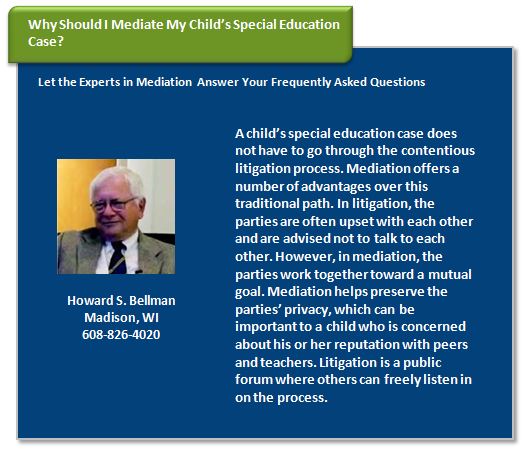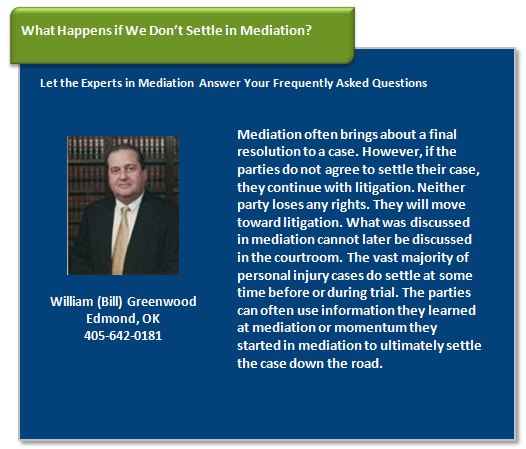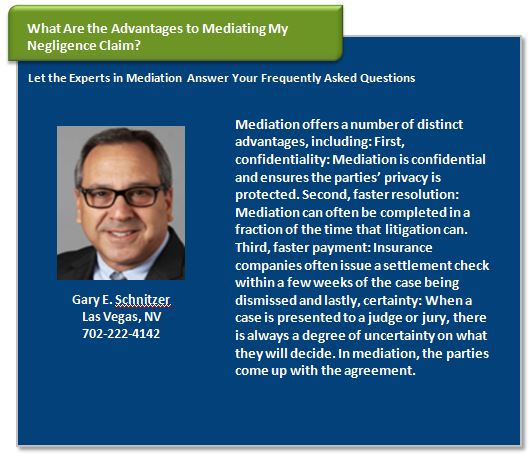
Resolving Church Disputes through ADR
 Many churches discourage the use of lawsuits to resolve a dispute. However, conflict may arise in the religious setting, such as disagreements between parishioners, issues between churches, purchases that church administrators make that others may disagree with or other disputes that arise that affect the church or parishioners. Mediation often advances the goal of the religious institution and can help to successfully resolve disputes. Mediators help those in conflict in church disputes in the following way:
Many churches discourage the use of lawsuits to resolve a dispute. However, conflict may arise in the religious setting, such as disagreements between parishioners, issues between churches, purchases that church administrators make that others may disagree with or other disputes that arise that affect the church or parishioners. Mediation often advances the goal of the religious institution and can help to successfully resolve disputes. Mediators help those in conflict in church disputes in the following way:
Respect Religion
Mediators are trained in conflict dispute resolution. They understand that a party’s religious and cultural values often help inform his or her thoughts in dispute. The mediator can acknowledge these values and use them in a positive manner to appeal to the parties’ needs and interests.
Discourage Escape Tactics
Sometimes people in conflict use escape tactics to avoid conflict. They may blame the other party or declare that they simply will not be involved in whatever the issue is. A mediator can guide parties away from these reflexive declarations and encourage them to confront the conflict head on. A mediator can explain that conflict provides an opportunity for the parties to come together and work out a solution that works for all parties involved.
Uncover Important Information
Mediators ask clarifying questions and dig for information. This helps them understand what led to the conflict and to identify what the parties’ interests are. Once the mediator has this information, he or she can use it to appeal to the parties’ desire to resolve the conflict while addressing these interests.
Promote Personal Responsibility
Mediators can communicate with each party individually and encourage the party to consider how he or she contributed to the issue and what he or she can do to help resolve the conflict.
Settlement Considerations of Negligence Cases
 Parties who are injured because of car accidents, slips and falls, defective products or other accidents may decide to litigate their case. The defendant or the victim’s legal counsel may recommend the process of mediation to defray some of the costs involved in litigation and to speed up recovery of financial compensation. Some of the following factors may impact the willingness of the parties to settle the case in mediation:
Parties who are injured because of car accidents, slips and falls, defective products or other accidents may decide to litigate their case. The defendant or the victim’s legal counsel may recommend the process of mediation to defray some of the costs involved in litigation and to speed up recovery of financial compensation. Some of the following factors may impact the willingness of the parties to settle the case in mediation:
Expectations
It is not uncommon for injury victims to have an outlandish idea about the value of their case. They may have heard news stories where multi-million dollar verdicts were issued. However, this is not the norm. Likewise, an insurance company may believe that it will prevail on a particular claim only to discover later that a jury holds its insured responsible. If both parties enter mediation with a realistic expectation regarding the potential value of the case, they will be more likely to settle their claim.
Worst Case Scenario
It can also be helpful to the parties to consider the worst case scenario. For the victim, this may be to recover nothing on the case. For the defendant, it may be to receive a judgment against it for a sizable amount. This can help the parties determine whether it is in their best interest to settle the case or to take a chance with a trial.
Recent Decisions
The parties may consider recent decisions made in the same venue to try to predict how a judge or jury may rule in a particular case. It may also look at how similar issues were decided in recent cases, such as questions regarding causation or contributory negligence.
Gary E. Schnitzer
William Greenwood

Elements and Defenses of a Negligence Claim
 There are four basic elements to a negligence claim. These and possible defenses to them are discussed below.
There are four basic elements to a negligence claim. These and possible defenses to them are discussed below.
Duty
This element requires the victim to establish that the defendant owed the defendant a certain duty of care. This may be due to a relationship between the parties, such as doctor and patient or product manufacturer or consumer. A defense to this element may be that there was not such a relationship between the parties.
Breach of Duty
The victim must establish that the defendant breached his or her duty of care. This may be established by showing how the defendant’s conduct rose to the level of negligence. In a car accident case, this may be because of violating a traffic law. In a slip and fall case, this may be due to not inspecting the area for hazards. Defenses to this element are often the most common. The insurance company may try to say the victim contributed to the accident or that the defendant acted within the proper standard of care.
Causation
This element requires the victim to establish the link between the defendant’s breach of duty and the victim’s injuries. For example, the defendant’s act of speeding may have caused him or her to collide with the victim’s vehicle. The defense may argue that the injures were pre-existing or were caused by another factor.
Damages
The victim must show that he or she was injured. The defense to this element may be that the victim’s injuries are exaggerated or were not incurred in the accident.
The Anatomy of Auto Accident Mediation
 Auto accident mediation is a confidential and voluntary way to potentially resolve an auto accident claim. The victim and the insurance company may attend mediation with a trained third-party neutral who facilitates discussion and guides the parties during the process. Typical auto accident mediation includes the following steps:
Auto accident mediation is a confidential and voluntary way to potentially resolve an auto accident claim. The victim and the insurance company may attend mediation with a trained third-party neutral who facilitates discussion and guides the parties during the process. Typical auto accident mediation includes the following steps:
Select a Mediator
The parties can select a mediator. Many personal injury mediators are lawyers or retired judges. However, mediators may also come from different backgrounds, such as being former insurance adjusters, business people or educators. The parties and the mediator set up a convenient time to mediate the case.
Introduction
When the parties arrive at mediation, the mediator explains his or her role. He or she explains the differences in a judge and a mediator. The mediator does not impose decisions on the parties. He or she cannot make the parties do anything. The parties are free to agree to suggestions or not. The parties retain control over the outcome of the case.
After explaining this important role, the mediator then explains that he or she is objective and does not represent the interests of either party. He or she may summarize the facts of the case as presented in pre-mediation briefs or mediation statements. He or she may also pinpoint the specific areas of contention noted in these materials.
After the mediator speaks, the parties may make a brief introductory statement about the accident, how it occurred and why they have not reached a settlement.
Negotiations
The parties may be separated during the next phase of mediation. The mediator may go back and forth between the parties, getting a better sense of the strengths and weaknesses of each side. The mediator relays information back and forth between the parties and may make suggestions on facilitating a compromise. The mediator may also take settlement offers back and forth, often starting low with the insurance company’s offer but possibly moving higher during the course of mediation.
Agreement
If the parties do settle the case, they will have an agreement prepared that outlines the terms they agreed to. The insurance company will usually ask the parties to sign a statement that they are releasing all claims in consideration of the settlement money.





